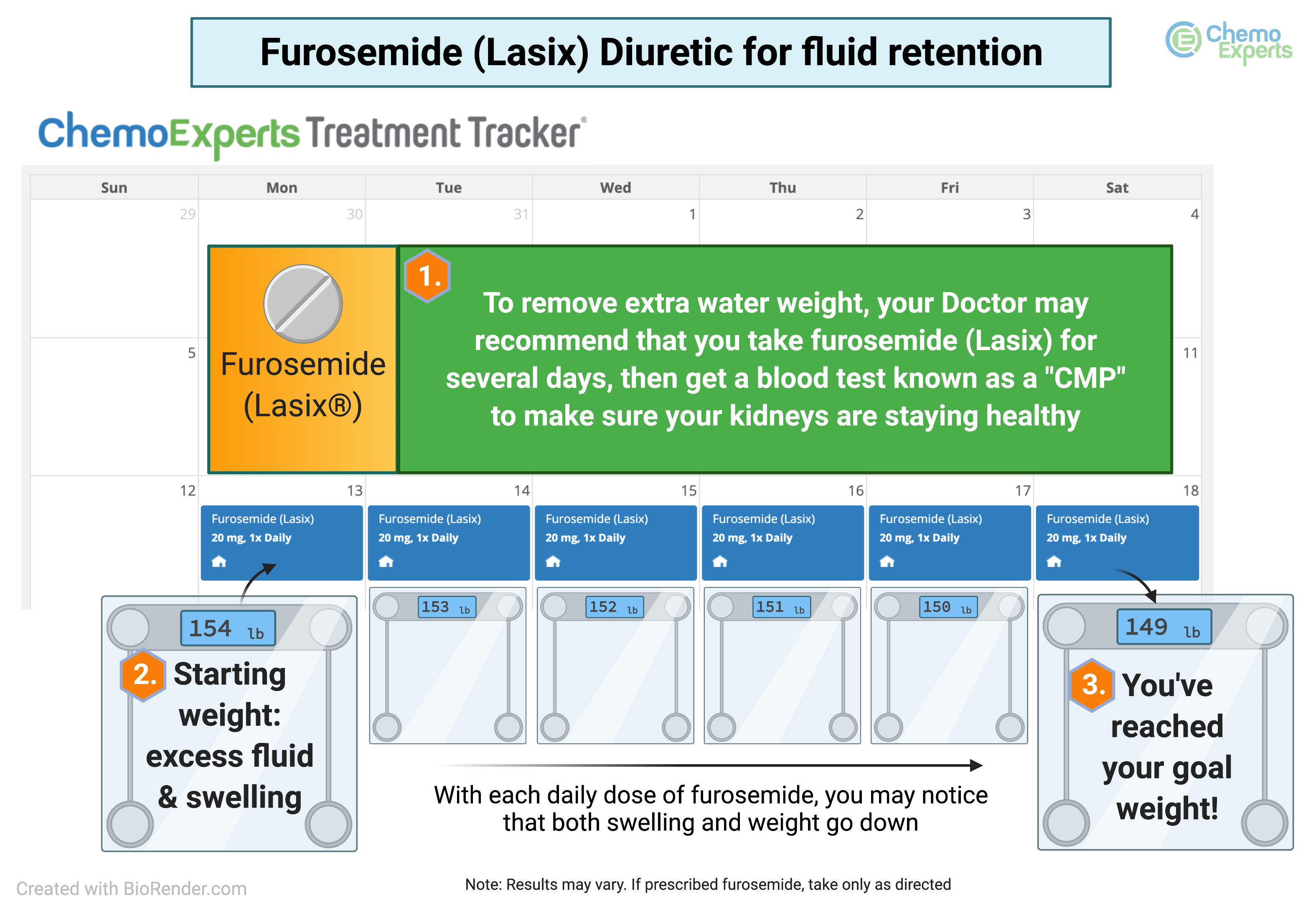Water retention can occur in various parts of the body. In most people, water retention appears in the lower extremities and causes arms and ankles to swell. Because of the swelling, your feet may not fit into your shoes. Socks, especially if tight fitting, can leave temporary imprints, or indentations, in your skin.
Depending upon the amount of swelling, the doctor may prescribe medication treatment to help your body get rid of the extra fluid.
Diuretics:
Also known as water pills, diuretics allow your kidney to release fluid that it would otherwise reabsorb. Examples of diuretics incliude:
- Furosemide (Lasix®)
- Bumetanide (Bumex®)
- Spironolactone (Aldactone®)
- Metolazone
If prescribe furosemide to help eliminate extra fluid, consider using the ChemoExperts Treatment Tracker to track what dose to take and for the duration prescribed by your doctor:

 +
+
 +
+